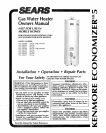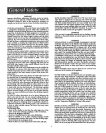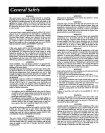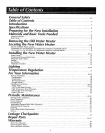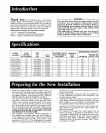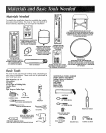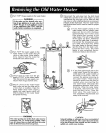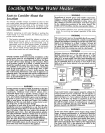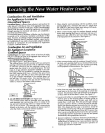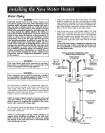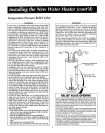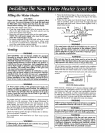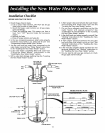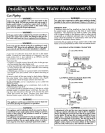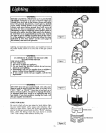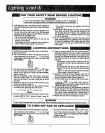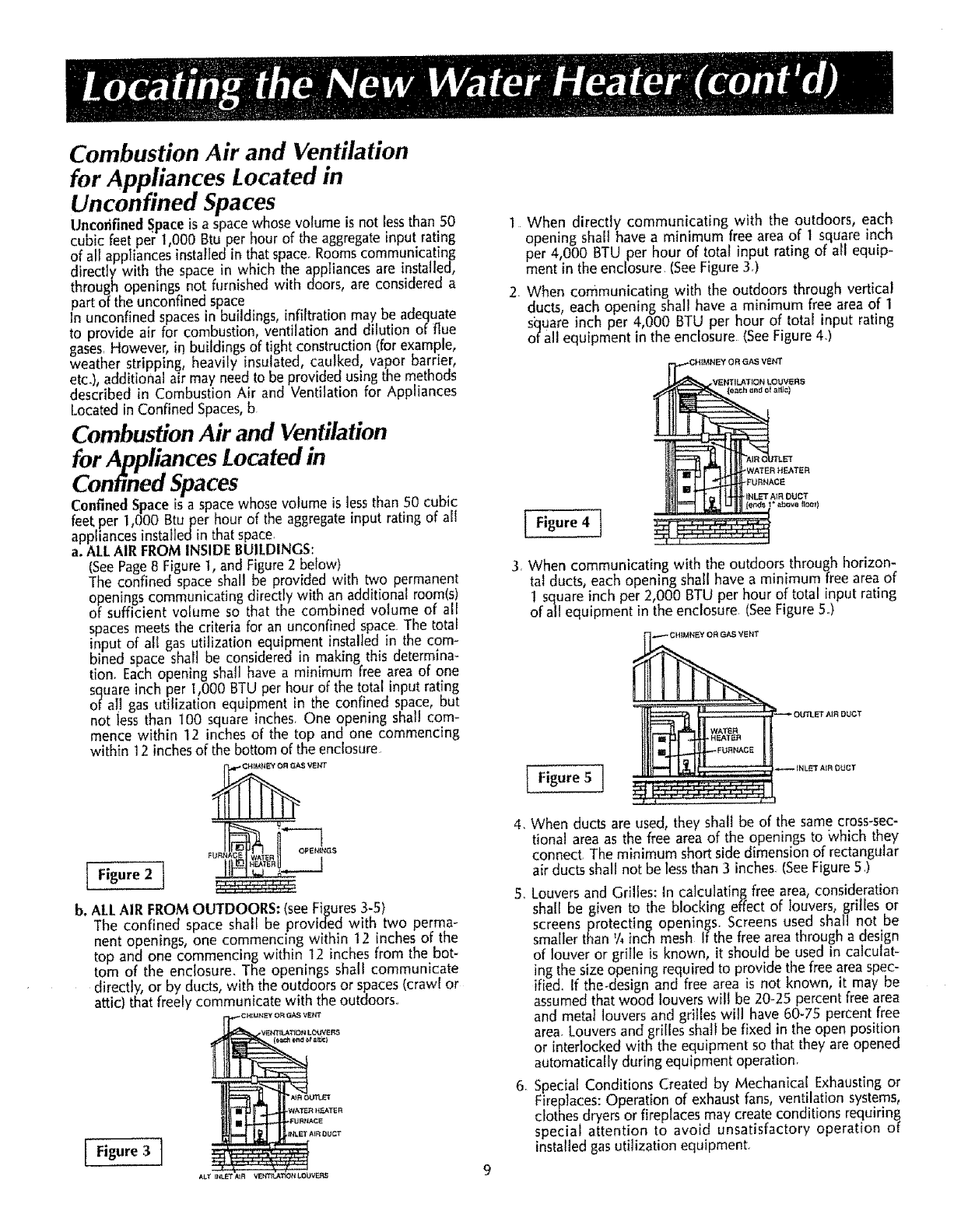
Combustion Air and Ventilation
for Appliances Located in
Unconfined Spaces
Unco_,fined Space is a space whose volume is not Jessthan 50
cubic feet per 1,000 Btu per hour of the aggregateinput rating
of all appliances installed in that space_Roomscommunicating
directly with the space in which the appliances are installed,
through openings not furnished with doors, are considered a
part of theunconfined space
In unconfined spacesin buildings, infiltration may be adequate
to provide air for combustion, ventilation and dilution of flue
gases,However, in buildings of tight construction (for example,
weather stripping, heavily insulated, cau]ked, vapor barrier,
etc.) additional air mayneedto be provided usingthe methods
described in Combustion Air and Ventilation for App lances
Located in Confined Spaces,b
Combustion Air and Ventilation
for Appl nces Located in
Confined Spaces
Confined Spaceisa spacewhose volume is lessthan 50 cubic
feet,per 1,000 Btuper hour of the aggregateinput rating of all
appliances installedin that space,
a.ALLAIR FROM INSIDE BUILDINGS:
(SeePageg Figure1,and Figure2 below)
The confined space shall be provided with two permanent
openingscommunicating directly with an additional room(s)
of sufficient volume so that the combined volume of all
spacesmeetsthe criteria for an unconfined space Thetotal
inputof all gas utilization equipment installed in the com-
bined space shall be considered in making this determina-
tion. Each opening shall have a minimum free area of one
squareinch per 1,000 8TU per hour of the total input rating
of a!l gas utilization equipment in the confined space, but
not lessthan I00 square inches. One opening shall com-
mence within 12 inches of the top and one commencing
within 12 inchesof the bottom of the enclosure
i---7
FUN OPEN{_IGS
b. ALLAIR FROMOUTDOORS: (see Figures 3-51
The confined space shall be provided with two perma-
nent openings, one commencing within 12 inches of the
top and one commencing within 12 inches from the bot-
tom of the enclosure. The openings shall communicate
directly, or by ducts, with the outdoors or spaces(crawl or
attic) that freely communicate with the outdoors..
Figure 3 i
ALT IIILET _R VEh'_qL&T_O,b_ I*OUV'_q5
]. When directly communicating with the outdoors, each
opening shah have a minimum free area of t square inch
per 4,000 BTU per hour of total input rating of all equip-
ment in the enclosure tSeeFigure 3.)
2. When communicating with the outdoors through vertical
ducts, each opening shall have a minimum free area of 1
square inch per 4,000 BTU per hour of total input rating
of all equipment in the enclosure (SeeFigure43
Figure4 t
TER
t ! ,.l
3. When communicating with the outdoors through horizon-
tal ducts, each opening shall have a minimum freearea of
I squareinch per 2,000 13TUper hour of total input rating
of all equipment in the enclosure (SeeFigure5.)
I Figure5 J
!1!" -tP
4, When ducts are used, they shall be of the same cross-sec-
tional area as the free area of the openings to _vhich they
connect. Theminimum short sidedimension of rectangular
air ducts shall not be lessthan 3 inches (SeeFigure5.)
5,.Louvers and Grilles: In calculating free area, consideration
shall be given to the blocking effect of louvers, grilles or
screens protecting openings. Screens used shall not be
smaller than %inch mesh If thefree area through a design
of louver or grille is known, it should be used in calculat-
ingthe size opening required to provide the freeareaspec-
ified,. If the-design and free area is not known, it may be
assumedthat wood louvers will be 20-25 percent free area
and meta] louvers and grilles will have 60-75 percent free
area.Louversand grilles shall be fixed in the open position
or interlocked with the equipment so that they are opened
automatically during equipment operation.
6 Special Conditions Created by Mechanical Exhaustingor
Fireplaces:Operation of exhaust fans,ventilation systems,
clothes dryersor fireplaces may create conditions requiring
special attention to avoid unsatisfactory operation of
installed gasutilization equipment.



